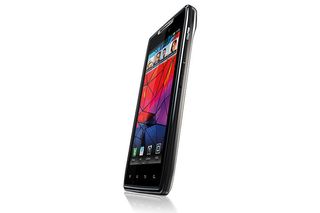
The RAZR's multitouch screen is very bright with excellent contrast.
Since it uses AMOLED technology, the RAZR's multitouch screen is very bright with excellent contrast, but it isn't as dazzling, or as super-saturated, as the similarly equipped Samsung Galaxy S II. That does mean that the photographic images it displays look a little more natural though, which is no bad thing. Unfortunately, the same can't be said of the way the RAZR displays text, since Motorola has followed Nokia's lead in fitting a sub-par PenTile matrix screen to its premium smartphone.
PenTile matrix display technology skimps on RGB sub-pixels to reduce screen manufacturing costs, which in turn reduces the actual pixel count. So, while the RAZR is reckoned to pack an impressively high 540 x 960 resolution display, the actual total subpixel count is one-third less than those numbers suggest and it shows. Text on the Motorola RAZR screen has the same slightly fuzzy appearance as on the Nokia Lumia 800 and while the effect in Android isn't as pronounced as with the text-heavy UI of Windows Phone 7, it's enough to distract.
